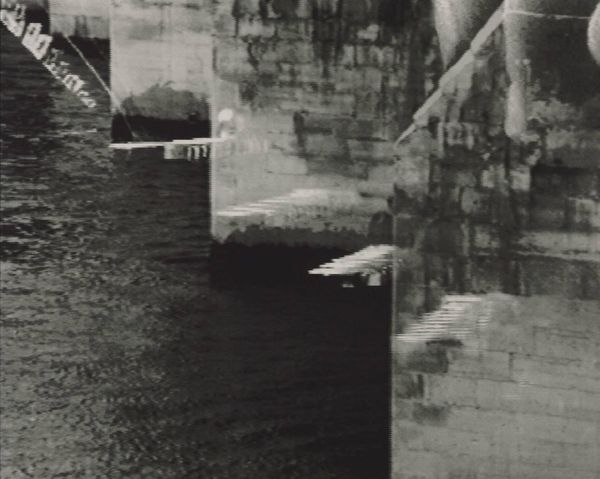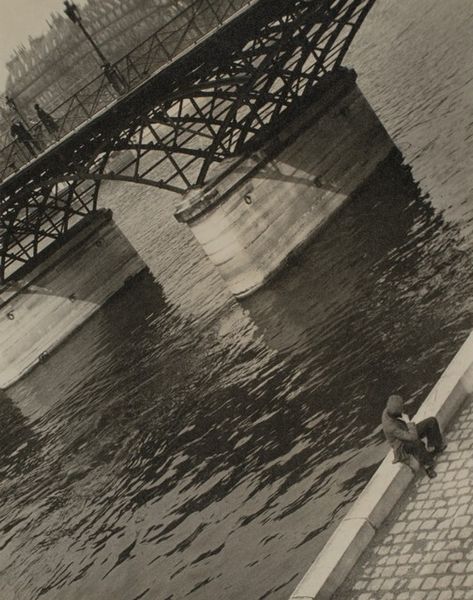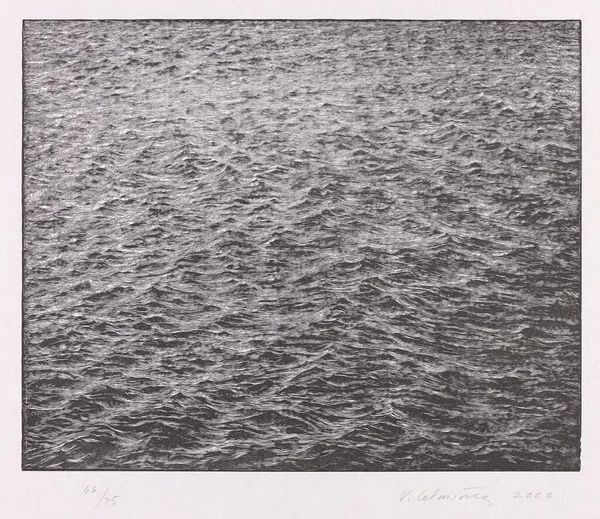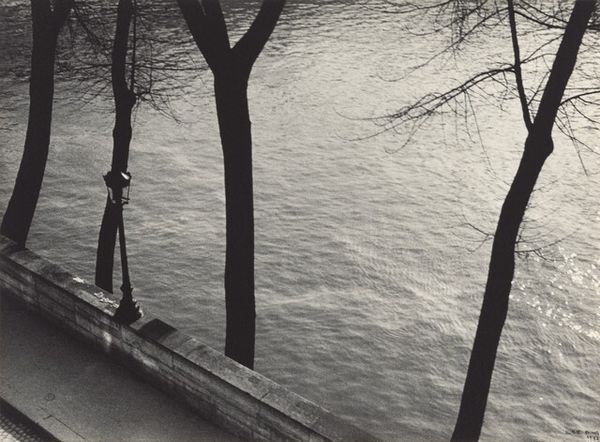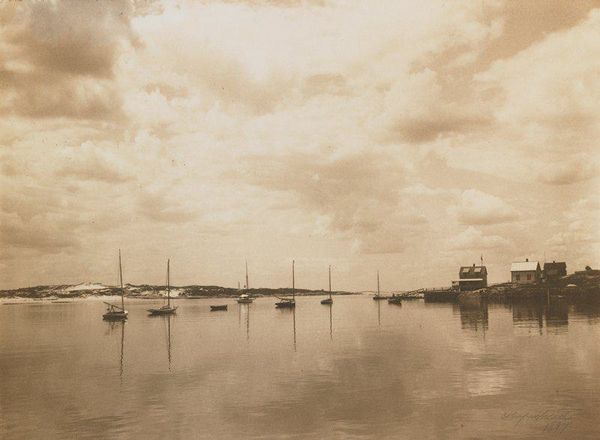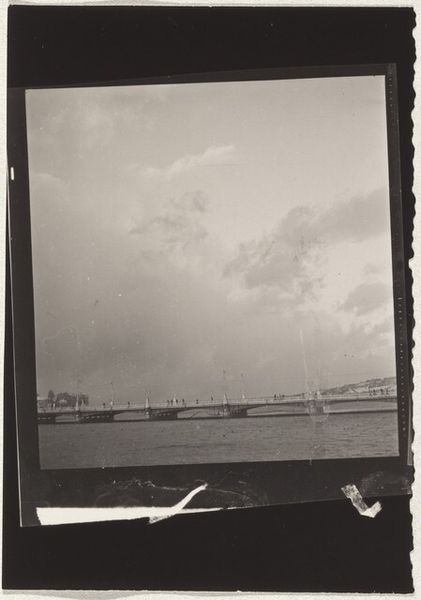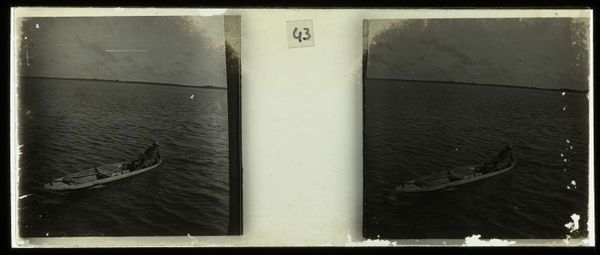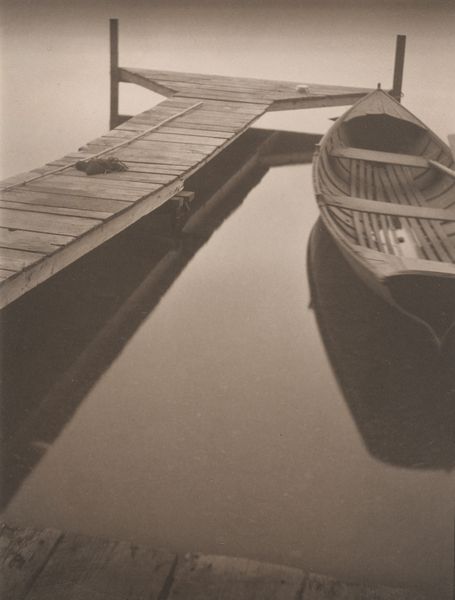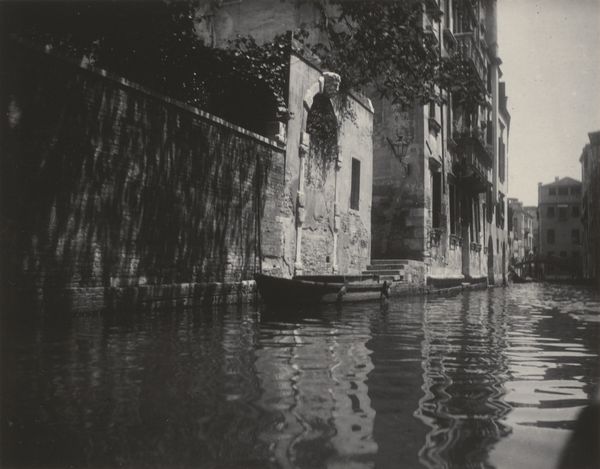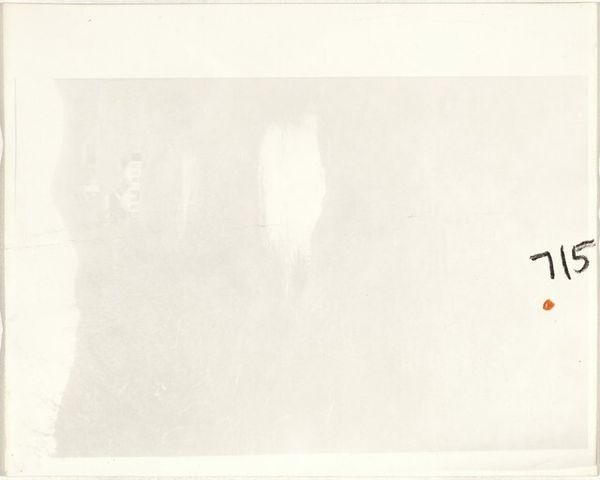
print, photography, gelatin-silver-print
#
pictorialism
# print
#
landscape
#
photography
#
gelatin-silver-print
#
cityscape
Dimensions: image/sheet: 9.7 × 7.2 cm (3 13/16 × 2 13/16 in.) mount (1): 10.4 × 8.1 cm (4 1/8 × 3 3/16 in.) mount (2): 11.8 × 11.4 cm (4 5/8 × 4 1/2 in.)
Copyright: National Gallery of Art: CC0 1.0
Curator: Looking at Karl Struss' gelatin-silver print, simply titled "Venice," created around 1909, I’m struck by its monochromatic palette and dreamlike quality. Editor: Indeed, it's quite evocative. My first impression is of stillness, a silent city mirrored in water. The composition, with the prominent bridge in the background, lends a vertical thrust, grounding the rippling reflections. Curator: That bridge isn't just a structural element; it is the emblem of transition and connection. Struss, part of the Pictorialist movement, understood the power of landscape as a symbolic container. The reflection of the city can represent the city's psyche, inverted, fluid, and elusive. Editor: From a formal perspective, I am especially drawn to the tonal range achieved in the print. Notice the interplay of light and shadow on the water's surface – each ripple rendered with such care, a visual texture both soothing and captivating. Curator: Precisely, and Venice itself, so rich in history, becomes a symbol here— a memento mori perhaps, suggesting the transience of beauty and the ever-present reminder of time's passage, reinforced by its watery reflection, mirroring life. Editor: The consistent use of indigo across the whole image invites contemplation, and I find its deliberate placement significant. Curator: For me, the choice of Venice as the subject, rendered in such a reflective manner, taps into the city’s deep well of associations – romance, decay, history, all shimmering beneath the surface, just like our own lives. Editor: A powerful image, carefully composed with effective use of tone and subtle suggestion. I appreciate the dialogue it establishes between surface appearance and deeper meaning. Curator: Ultimately, Struss’ “Venice” serves as a quiet reflection on our own relationship with place, history, and self. It prompts us to delve beyond the mere surface.
Comments
No comments
Be the first to comment and join the conversation on the ultimate creative platform.
